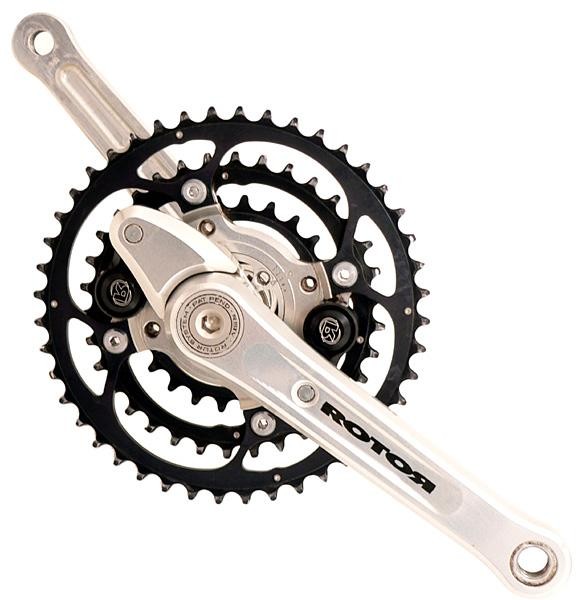On test: Rotor RSX4 MTB (Go-faster rings)
The intricacies of Rotor's crank mechanism are initially daunting, but in the field and on the...

The intricacies of Rotor's crank mechanism are initially daunting, but in the field and on the trail, it really does seem to deliver on the claims, as James Huang finds.
In a world of superlight carbon fibre cranks, a Rotor crankset sticks out like a sore thumb with its somewhat awkward-looking assortment of additional hardware and appendages. Rotor has replaced their old configuration with the new RSX4, which consists of a semi-integrated two-piece crank and bottom bracket arrangement with a splined spindle. The new setup, however, still does not use the dual-outboard bearing construction that people have now gotten used to and the new splined spindle isn't much larger in diameter than the old square tapered one. At 1310g (2.89 lbs), our RSX4 MTB steel test crankset is also not only over a full pound heavier than a current-generation XTR crankset, but with a suggested retail price of US$729, it's also nearly US$270 more expensive. Oh, right, plus it's kind of funny looking. So… tell me again why someone should buy these?
The concept
Well, clearly Rotor would have gone under years ago if there were no performance benefits to this thing and Rotor makes some rather heady claims, such as a 16% increase in power output, a 15% reduction in lactic acid production, and a 5% reduction in heart rate as compared to a standard crankset. These benefits are allegedly the result of their unique system which constantly varies the angle of the crankarms relative to each other to eliminate the dead spot from your pedal stroke.
Read James Huang's entire review of the Rotor MTB Crank here.
Get The Leadout Newsletter
The latest race content, interviews, features, reviews and expert buying guides, direct to your inbox!